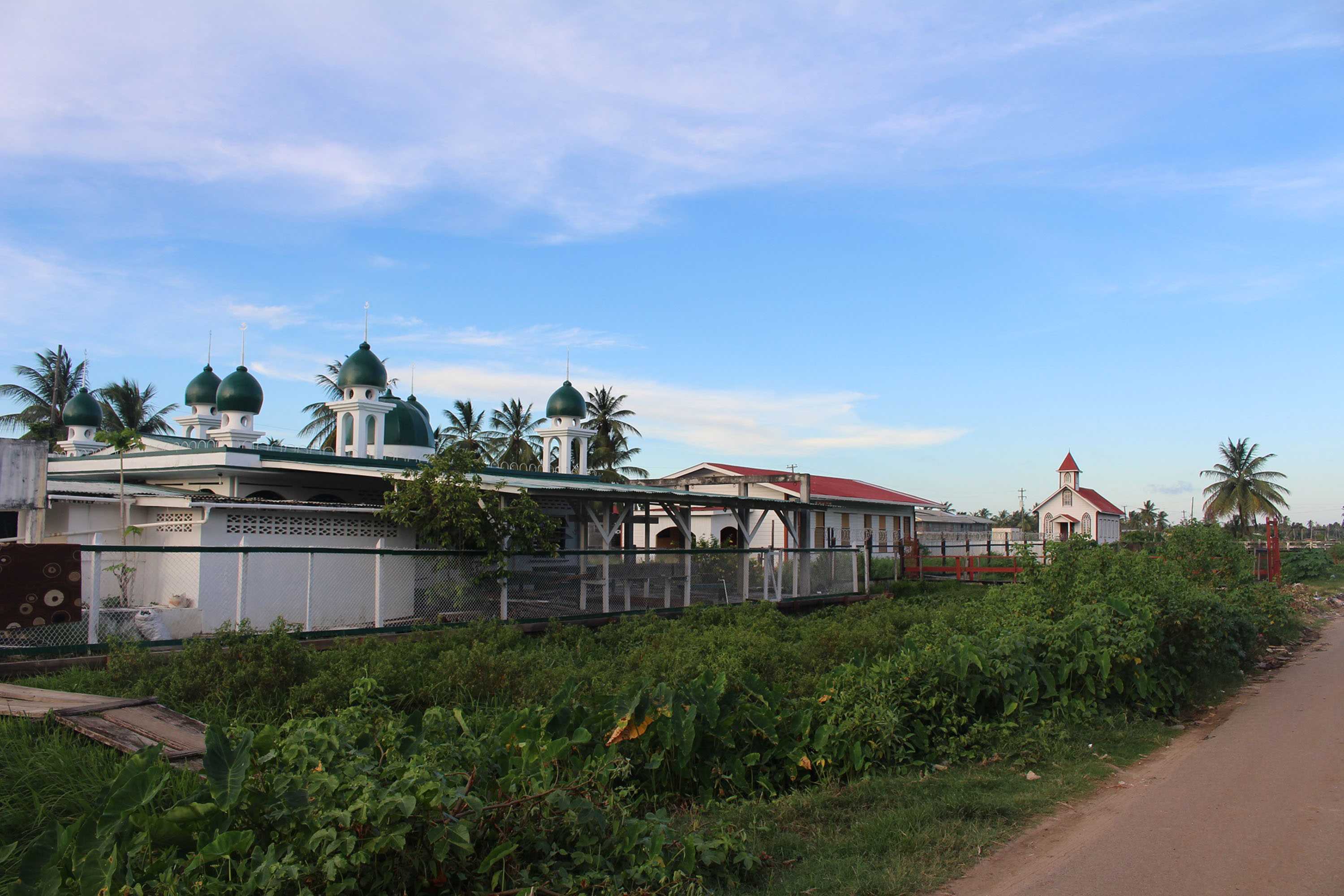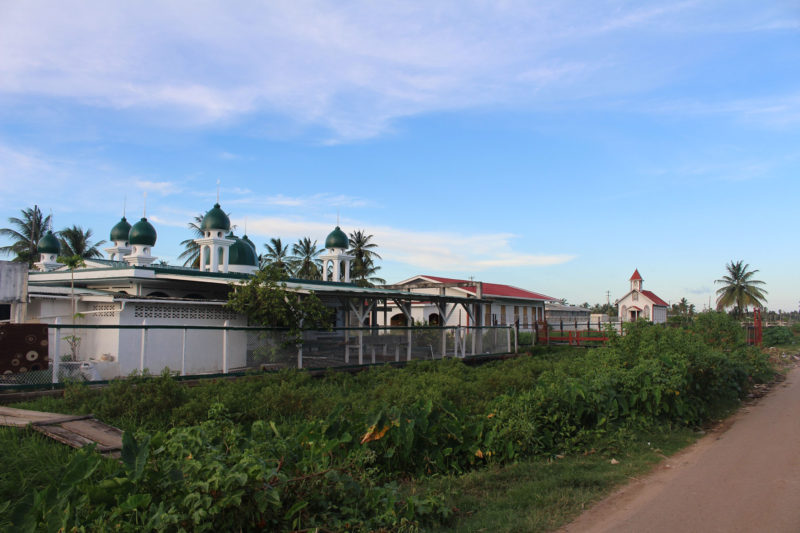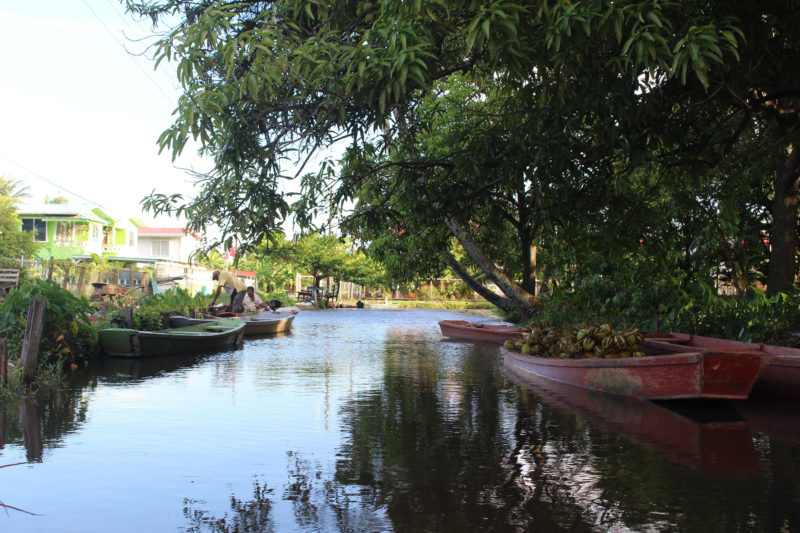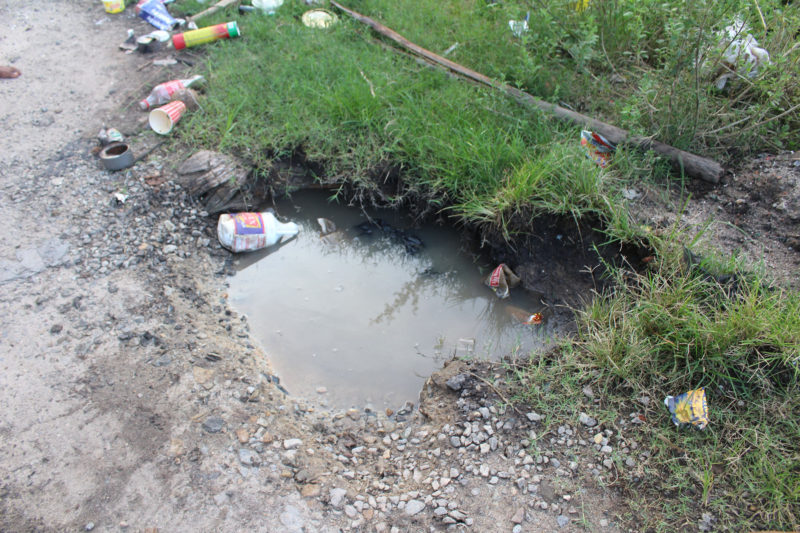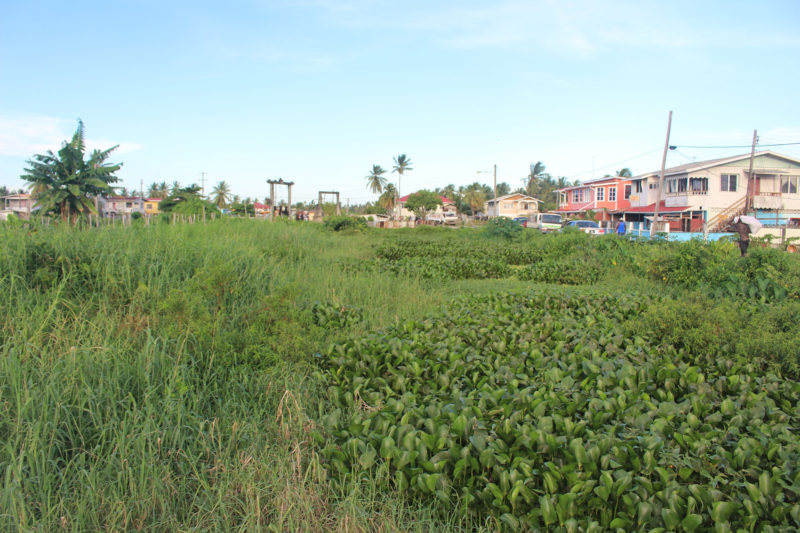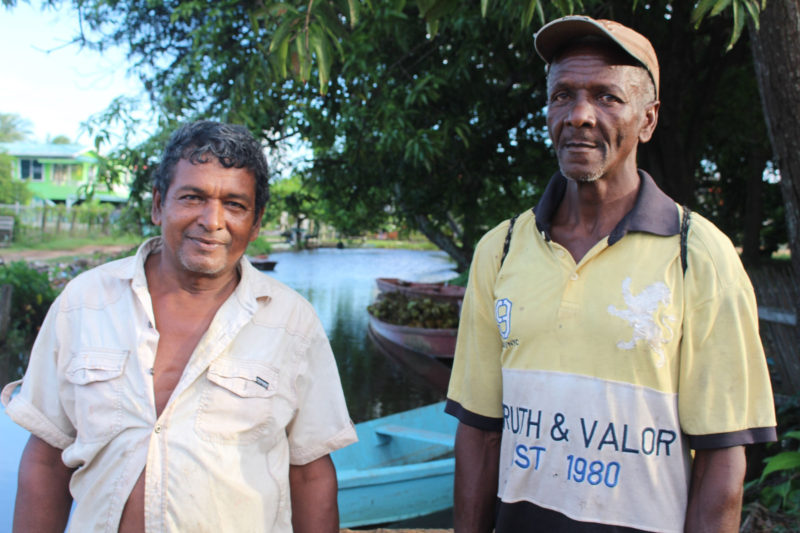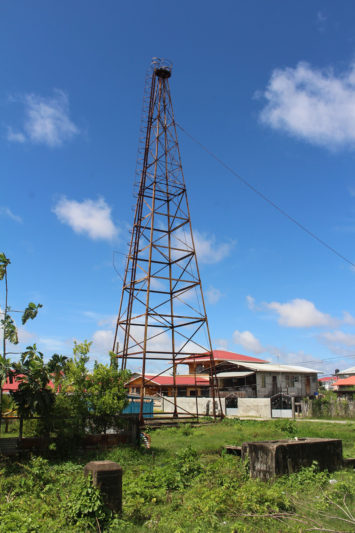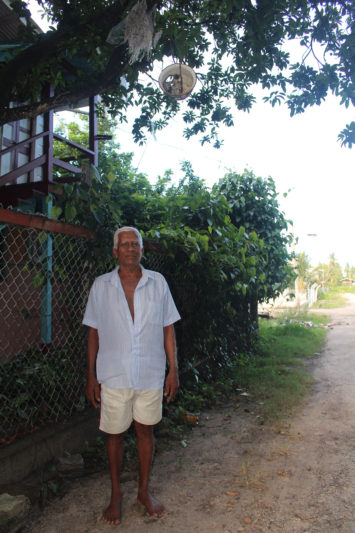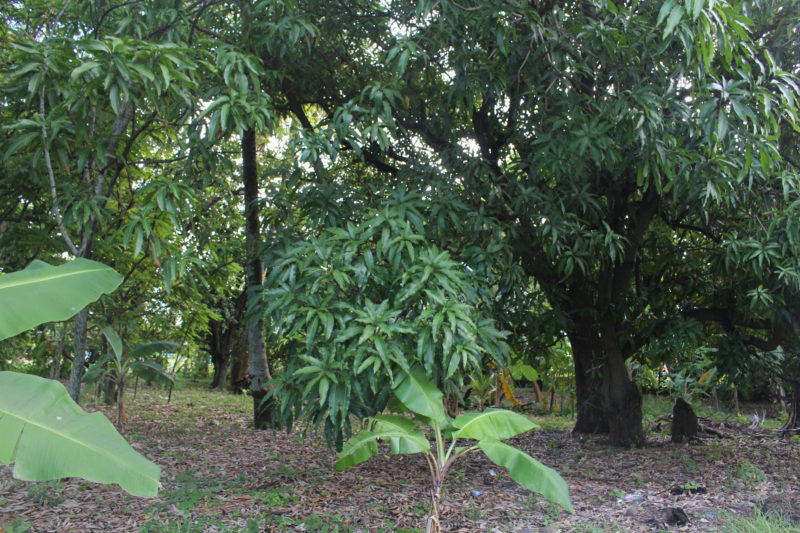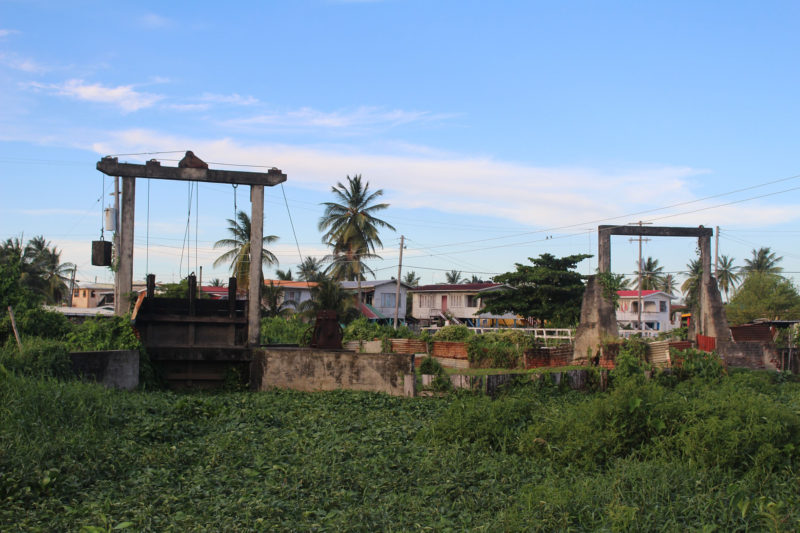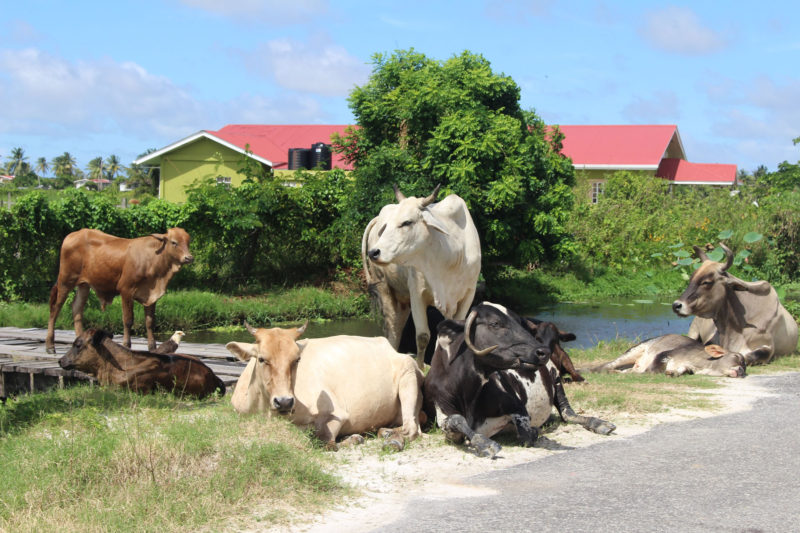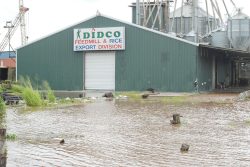Situated on the East Coast Demerara, Clonbrook us the village between Ann’s Grove and Bee Hive. It is also bordered by the Atlantic Ocean to the north and the conservancy canal at the south end and is 30 kilometers from the capital.
Earlier this week the World Beyond Georgetown revisited retired judge Nandram Kissoon, who lives in Bee Hive but was born in Clonbrook. He produced a document written by previous chairman Samuel Bridgemohan on the village’s history as well as recounted some of what he remembered.
The village arrived at its name after the Dutch settled here in the eighteenth century. In 1802, when the English invaded Clonbrook, John Croal succeeded as its owner. 1892 saw a flourishing Plantation Clonbrook Sugar Estate with an abundant supply of cane from within Clonbrook and its neighbouring villages also. However, that same year calamity struck when the factory was burnt down. It was rebuilt by Anthony Gordon but was again wrecked by fire in1895 and later that same year the entire plantation of canes went up in flames.
The government purchased the village for defence rates in the 1900s as there was no money to maintain the cost of drainage with the estate having suffered bankruptcy. Clonbrook was paid for with money from the repatriation funds and at the request of the Indian immigrants it was laid out as a land settlement scheme and given to them in lieu of return passage to India. On March 3, 1908, Clonbrook became a Land Settlement Scheme strictly for East Indians, but the other ethnic groups who were living there already were given the option to remain if they so desired.
The government sold a house lot for $15 and when the sale of the entire estate was completed, purchasers received their transports in 1912. Clonbrook comprises 870 acres divided into sections A, B and C of which there are 162 house lots up to the Railway Embankment. From the Railway Embankment to the Atlantic Ocean was leased to the village council but was never renewed; it is now occupied by the Doch Cab Cooperative Society.
A survey in 1908 and 1909 led to Clonbrook becoming a rural authority administered by the then local government board. During 1937 to 1939 Clonbrook, Ann’s Grove and Two Friends were amalgamated but because of lack of cooperation the integration was soon dissolved and Clonbrook was separated from the two villages and soon after was elevated to a Country Authority.
On the street situated just after the Clonbrook Post Office, just about a block away from School Street, stands a beacon that once guided the ships which was built in 1957. Just in front, firmly buried in the side of the road yet still visible lie some of the remnants of what used to be the Clonbrook Train Station.
According to Kissoon, the first train arrived at ten minutes to six in the mornings. There were no secondary schools on the East Coast then and the few children attending secondary schools travelled to Georgetown on the first trip. Having to milk cows and water plants among other chores, children had no choice but to rise at four every morning and get them done before boarding the train. Their journey took two hours, as there were stops at other stations. Farmers used the train as well, to get their produce to the city. There was also a bus service called ‘Lady Denham’ which transported commuters and the farmers’ produce. Apart from the bus and the train, there were four cars in the village. People, he said, did not have clocks but knew the time from the arrival of the train and from the sun.
Opposite the beacon, sits an old house in place of what was once the Reno Dancehall, famous for its square dances, weddings and other events. In the olden days, two of the most prominent persons in the village were businessmen James Hercules who produced fibre from coconut husks for the making of mattresses and Bhawan Singh who made furniture and glass windows.
In another street, a Mosque and two churches occupy adjacent lots opposite the Vishnu Mandir, a nod to Clonbrook’s thriving unity in diversity.
The mandir had hosted lessons for the Indian children who were afraid to attend Ann’s Grove Primary during the 1964 riots. Later that year, with a loan of $5,000 from the government and the remaining $1,147.41 taken from local authority funds, the Clonbrook Government School was built. The school is situated opposite the mandir.
Further up, at the junction of two streets filled with potholes, is one of the village’s oldest buildings which was one of the largest shops in its time, owned by Sridhar Singh. Just out front, Deon Williams runs Best Wash Bay. Williams said his business sets a trend, as unlike other wash bays around, he pumps water from the canal across the road and uses it to wash cars. He said drivers actually prefer this, as their vehicles remain sparkling clean unlike the dull look of other vehicles washed with rusty tap water. The canal has to be keep clean and Williams said he had undertaken that task, as he is using it but it has again filled with foliage and he thinks it is high time the Neighbourhood Democratic Council starts doing a better job of maintaining the canals.
Williams, who was born in Ann’s Grove just a stone’s throw away, grew up in Clonbrook. He reminisced on a boyhood riding his bicycle, feeling for fish in the drains, playing basketball and football and sometimes chasing one of the donkeys along the road for a ride, but most of his life he said was spent in the backdam planting cash crops.
What he wishes yesteryear could have given the future was more mannerly children. Today’s children seem so different and more disrespectful, he said, adding that there was no place for disrespectful children in his day. He tries his best with his two young daughters to see that respect plays a big part in their lives.
Just behind Clonbrook Primary is the community centre ground where Williams grew up playing. The ground has more bad areas than good and boys wanting to use it today are tasked with finding a good spot before they can play. The ball field, according to Williams, was up-to-date when he used and he is saddened by the condition of it now. He would also like to see a recreational facility.
“Clonbrook is a really nice place,” Williams said. Although the village has all the amenities it needs there are a few persons, he said, who refuse to use electricity and are most comfortable using their flambeaux.
Seventy-seven-year-old Dhanpaul (only name given) known as Paulo was seated on a bench braced against a fence that borders ‘Factory Yard’, which was once the factory across from his house. His house is situated on what was once called ‘Truckline Dam’ which ran from the Railway Embankment to the factory. It is rumoured that the train line reached as far as the factory but no one knows for sure.
Where the factory once stood is now an orchard. Craters can still be seen among the trees where the rollers that squeezed the juice from the canes were piled and then dynamited. However, only the craters remain as proof of this as the remains were taken away for scrap iron.
The factory yard is cut off by the Middle Walk Irrigation Canal that runs from through the backdam.
Dhanpaul, his speech affected by stroke, slowly recounted attending the Ann’s Grove Roman Catholic School saying that before and after school found him taking care of their cattle. He added that he planted rice also.
Across from him is a laden sapodilla tree from which hangs a bedroom utensil, which he explained was put there so as “to prevent bad-eye”. The paan vine decorating his fence is one of the most demanding plants in his yard. Its leaves are used during Hindu ceremonies and while some persons would ask him for a small plant to replant, most just turn up for the leaves leaving donations.
Upon leaving Dhanpaul, we caught up with Boodhan Singh who had just returned with his boat from the backdam. His life in the backdam started when he was 12 years old; he plants cash crops and fine-leaf thyme. His farm is situated some seven miles away and he takes a little over an hour to get there.
Every day Boodhan leaves home at seven for his farm returning at five and while he’s taken up with farm duties, his wife has her work cut out for her at Bourda Market where she sells the thyme wholesale. He added that it really is hard work but it’s got to be done whether he makes a profit or not.
At the corner of the road, off the irrigation canal is a flooded hole which an angry resident (who wishes to remain anonymous) explained was eroded from the bottom-up and could have been avoided had officials given Ann’s Grove its own sluice. Instead, the resident said, one of the dams was busted so as to provide Ann’s Grove with water. However, when the koker opens, all the water comes flowing through the irrigation canal, flooding the road and the yards nearby. Because of this, yards around are covered in moss. Instead of cleaning the drainage canals, Middle Walk Canal is being used for drainage which adds to the problem. He is pleading with authorities to deal with this prolonged issue as soon as possible. Pointing to the hole he said, if this continues, it is more than likely that the road can collapse into the water beneath.
